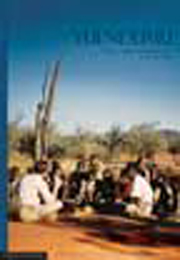Book contents
- Frontmatter
- Foreword
- Preface
- Dedication
- Acknowledgments
- Contents
- Tables and Figures
- 1 The Yuendumu Project: Anthropological Foundations
- 2 Yuendumu and the Warlpiri: Early History
- 3 Yuendumu: The Longitudinal Project 1951–1960
- 4 Yuendumu: The Longitudinal Project 1961–1971
- 5 Occlusal Development and Function in the Warlpiri
- 6 Facial Growth Patterns in the Warlpiri
- 7 People and Personalities Involved with the Project
- 8 The Past, the Present and the Future
- 9 The Research Legacy: Publications, theses and films directly relating to the Yuendumu Study
- Appendics
5 - Occlusal Development and Function in the Warlpiri
Published online by Cambridge University Press: 05 June 2012
- Frontmatter
- Foreword
- Preface
- Dedication
- Acknowledgments
- Contents
- Tables and Figures
- 1 The Yuendumu Project: Anthropological Foundations
- 2 Yuendumu and the Warlpiri: Early History
- 3 Yuendumu: The Longitudinal Project 1951–1960
- 4 Yuendumu: The Longitudinal Project 1961–1971
- 5 Occlusal Development and Function in the Warlpiri
- 6 Facial Growth Patterns in the Warlpiri
- 7 People and Personalities Involved with the Project
- 8 The Past, the Present and the Future
- 9 The Research Legacy: Publications, theses and films directly relating to the Yuendumu Study
- Appendics
Summary
A key outcome of the Yuendumu studies has been a new way of conceptualising what constitutes so-called normal occlusal development and function in humans. This new view has important implications for dentistry and the management of dental problems. This chapter provides an overview of some of the main findings arising from the studies of Yuendumu Aboriginal people and highlights their implications for dental science and practice.
Introduction
Anthropologists have extensively recorded population differences in the dentition in studies of comparative anatomy, human evolution and palaeo-pathology. Dentists must also consider the great variation in dental structures exhibited by members of a single population and by relatives within a family. The source of this variation is the interaction between genes and environment during the initial formation and subsequent growth of the masticatory structures. Even in the same individual, the arrangement of teeth within the dental arches and the manner in which they contact do not remain static throughout life but continually change in response to normal growth processes, environmental influences, dental treatment, pathology and ageing. Changes of this nature have particular relevance for the clinical dentist. Although significant advances in masticatory physiology have occurred in recent years, many concepts of dental occlusion retain an element of 19th century teleological thought. As Brace (1977) put it, “the idea of the perfect occlusion has shimmered in the imagination of the dental profession somewhat like the Holy Grail of Arthurian legend – the unattainable height of earthly aspiration”.
- Type
- Chapter
- Information
- YuendumuLegacy of a Longitudinal Growth Study in Central Australia, pp. 101 - 134Publisher: The University of Adelaide PressPrint publication year: 2011



